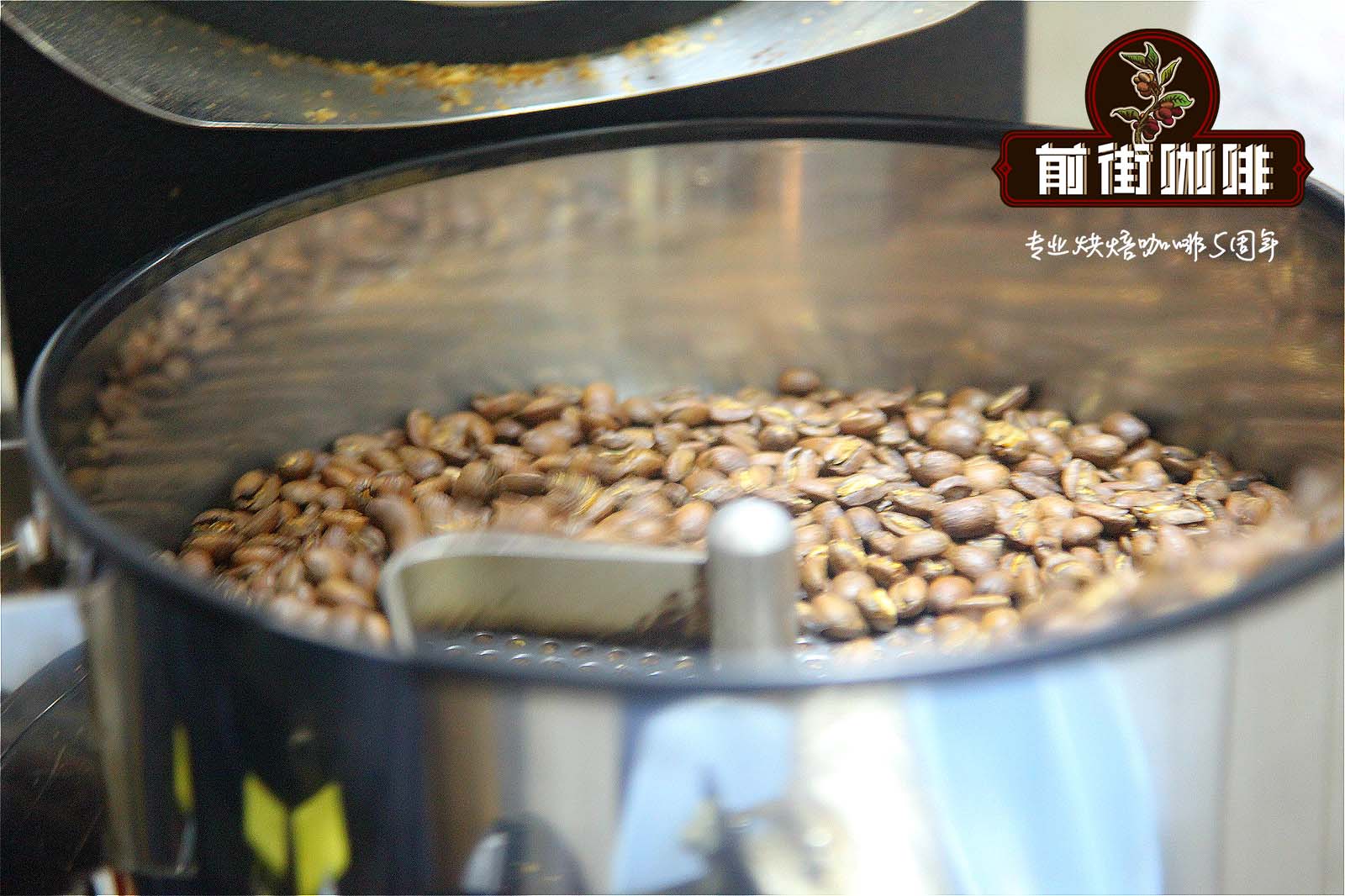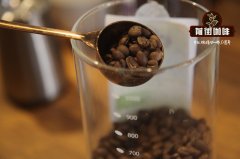A brief history of Kenyan coffee auction grading system introduces which brands of Kenyan coffee are good or not expensive

Professional coffee knowledge exchange more coffee bean information please follow the coffee workshop (Wechat official account cafe_style)
Kenya, the full name of the Republic of Kenya, is located in eastern Africa, the equator runs across the central part of the equator, and the Great Rift Valley of East Africa stretches north and south. It is bordered by Somalia to the east, Tanzania to the south, Uganda to the west, Ethiopia and Sudan to the north, and the Indian Ocean to the southeast. There are many plateaus in the territory, with an average elevation of 1500 meters. The central peak of Kirinaga (Mount Kenya) is 5199 meters above sea level and the top of the mountain is covered with snow, making it the second highest peak in Africa.
Altitude, latitude, geology: the equator runs through Kenya, and the border is just within ten degrees of north and south latitude. Belonging to tropical producing areas, there are two rainy seasons every year, with two harvests, with 60% concentrated from October to December and another 40% from June to August. Coffee is mainly grown in volcanic areas from the capital Narobi to the mountains of Kenya at an altitude of 1600-2100 meters. This height is suitable for the development of coffee bean flavor, because the mountain temperature is lower, the growth is slow, the aroma components of coffee beans have been fully developed, the sour taste is more obvious, and the texture is harder. This fertile, moon-shaped coffee area is the main producer of Kenyan boutique coffee beans.
Coffee is Kenya's second export product after tea.
Two varieties of Kenyan coffee beans have attracted the attention of boutique coffee owners: SL-28 and SL-34. This is the second of 40 varieties led by Guy Gibson of Scott Scott Laboratories Lab, which was cultivated and named in the laboratory in 1930. According to botanists in SL laboratory, SL28 and SL34 are genetic variants. They account for the vast majority of Kenya's high-quality coffee production, but these varieties are susceptible to leaf rust.
SL34 has French missionaries, bourbon, and more Tibica ancestry. Copper leaf color and broad bean-shaped beans have a great sense of sweetness, balance and complex flavor, as well as remarkable citrus and black plum characteristics.
At present, the popular varieties in Kenya include Ruiri 11 with high disease resistance but slightly lower taste, and Batian, K7 and Kent with high drought resistance. Kenya is sparing no effort in developing varieties that are resistant to leaf rust. Ruiru11 is the first successful variety recognized by the Kenyan Coffee Council, and people are looking forward to the future cup test of Batian varieties.
Coffee is very different from county to county (county) in Kenya. Kenya is divided into 47 "counties" (county).
Coffee in different counties has distinct characteristics. Coffee trees in Kenya are mostly planted at 1400-2000 meters above sea level and harvested twice a year. The growth areas include Ruiri, Thika, Kirinyaga and Mt. Kenya West, Nyeri, Kiambu and Muranga. Mainly in the foothills of Mt.Kenya and Aberdare. For example, Embu coffee characteristics, balance, citrus fruits, chocolate, apples, acidity. Nyeri coffee features, white grape, juicy, grapefruit and small tomato flavor, fruity, as sweet as caramel.
Major coffee producing areas of coffee beans in Kenya:
NYERI (Nieli)
NYERI: Nyeri in central Kenya is home to the extinct volcano Mount Kenya. The red soil in this area breeds the best coffee in Kenya. Agriculture is extremely important here; coffee is the most important crop. Common cooperatives made up of small farmers are more common than large manors. There are two harvests in this area, but coffee from the growing season is usually of high quality.
Altitude: 1200-2300 m
Harvest period: October to December (main production season), June to August (by-product area)
Varieties: SL-28, SL-34, Ruriu11, Batian.
MURANG'A (Mu Rentu)
MURANG'A: there are about 100000 coffee farmers in this district of the central province. This inland producing area was the place of settlement chosen by the first missionaries because Portugal banned them from living in coastal areas. This is also another German producing area that benefits from volcanic soil, with more small coffee farmers than manors.
Altitude: 1350 to 1950 m
Harvest period: October to December (main production season), June to August (by-product season)
Varieties: SL-28, SL-34, Ruiru11, Batian
KIRINYAGA (Kirinaga)
The KIRINYAGA:Nyeri producing area lies to the east, and this area also benefits from volcanic soil. Coffee is usually produced by small farmers, and wet treatment plants also produce a lot of very high quality coffee, which is well worth a try.
Altitude: 1300 to 1900 m
Harvest period: October to December (main production season), June to August (by-product season)
Varieties: SL-28, SL-34, Ruiru11, Batian.
EMBU (Enbu)
EMB: the name of this area near Mount Kenya comes from the city of Embu, where about 70% of the population is engaged in small-scale farming, and the most popular cash crops in the area are tea and coffee. Almost all coffee comes from small farmers, and the yield in this area is relatively small.
Altitude: 1300
MERU (Meru)
MERU: most of the coffee in this area is grown by small farmers in the foothills of Kenya and in the Nyambene hills. The name refers to the magnetic field area and the Meru people who live there. They were the first Kenyans to start producing coffee in the 1930s because of the importance of guaranteeing the rights of people of African descent in Kenya in the White Paper (devonshire white paper) signed in 1923.
Altitude: 1300 to 1950 m
Harvest period: October to December (main production season), June to August (by-product season)
Varieties: SL-28, SL-34, ruiru11, Batian, K7
KIAMBU (Giambo)
KIAMBU: this producing area in central Kenya has the highest coffee growing area in the region. However, some coffee trees at high altitudes can get Dieback and stop growing. This producing area is named after the town of Nakuru. Coffee is grown here in the form of both manors and small farmers, but the yield is relatively small.
Altitude: 1850-2200 m
Harvest period: October to December (main production season), June to August (by-product season)
Varieties: SL-28, SL-34, Ruiru11, Batian
KISII (Kisi)
KISII: this area is located in southwestern Kenya, not far from Lake Victoria, is a relatively small producing area, most coffee beans come from free small producers of common cooperatives.
Altitude: 1450 to 1800 m
Harvest period: October to December (main production season), June to August (by-product season)
Varieties: SL-28, SL-34, Lanshan, K7
TRANS-NZOIA, KEIYO&MARAKWET (Terrance-Enzoya & Maraquette)
TRANS-NZOIA, KEIYO&MARAKWET: this small producing area in western Kenya has begun to develop in recent years. Mount Elgonne provides a certain altitude, and most of the coffee comes from the manor. Coffee is usually grown to diversify previously exclusive cornfields or dairy farms.
Altitude: 1500 to 1900 m
Harvest period: October to December (main production season), June to August (by-product season)
Varieties: ruiru11, batian, SL-28, SL-34.
Coffee farms are mostly small-scale operations with an annual output of hundreds of kilograms. They will decide to sell the fruit to the nearby processing plant (Coffee Factory) according to the delivery distance and the purchase price. Farmers own a small area of land, which is usually measured by the total number of trees on a piece of land, which means that producers often have more autonomy to strategically pick fresh coffee fruit. and can deliver the most mature fresh coffee fruit to the local factory (washing plant). Factories generally have abundant water resources for fine washing, including soaking coffee beans in fresh water for a long time to consolidate the unique Kenyan flavor.
[Kenyan-style 72-hour fermentation water washing treatment] originated in Kenya and adopted the cyclic repeated treatment method of washing after fermentation, which was made after the same day of harvest to select the best quality cherries for peeling and fermentation. the fermentation time is 24 hours, and clean river water is used after 24 hours.
Then, it was fermented again with clean river water for 24 hours, then washed, and repeated 3 times for 72 hours, so it was called Kenyan 72-hour fermentation water washing treatment, abbreviated as [K72].
First washing and fermentation
After the coffee cherry harvest, the beans will first be picked by the specific gravity of the water flow; the principle is that the coffee fruit itself is screened by the difference in density and quality; the coffee beans with high density (heavy weight) will sink into the water, while the coffee beans with low density will float. The coffee fruits with high mature quality have high density, so they are screened out for further treatment.
After the high-quality and ripe fruits are selected, the peel is removed, washed and soaked, and the pectin mucus attached to the outer layer of raw beans is fermented. Pectin has natural sugars and alcohols, which play an important role in the development of sweetness, acidity and overall flavor of coffee.
The fermentation time is as long as 24 hours, and after fermentation, 80% of the pectin is removed, leaving only the flavor in the coffee beans.
The second washing and fermentation
Then enter the second washing fermentation process. After the coffee beans in the previous stage are cleaned, they are soaked in water again for 24 hours. This process increases proteins and amino acids, and the acidity of coffee beans creates complex and delicate layers of taste.
Finally, remove all the remaining pectin and move the coffee beans to a high scaffolding for sun drying, depending on the weather, which usually takes about 10 days.
Kenya coffee beans have a strict grading system. Coffee beans taken out by washing plants are divided into AA,AB,C,E,PB,TT,T,ML,MH according to their size, shape and hardness, and according to their size and shape. These grades mainly distinguish the shape and size of beans, but not absolutely represent the quality of beans. Many people believe that beans with larger grains contain more oil that produces the aroma of coffee, and because of this, beans with larger grains are more expensive in the market.
AA is a class name of coffee raw bean currency, it mainly refers to the size of coffee beans, AA refers to coffee beans with larger particles, generally coffee beans with particles of more than 17 mesh (17 mesh = mesh diameter 6.75MM) AA size is 17 mesh and 18 mesh, AB is 15 mesh, 16 mesh.
In the same grade of beans, the highest grade is manor beans, followed by "+", and then the general AA,AB grade compared with AA,C grade is smaller beans, E grade is extra-large elephant beans, TT, T, ML, MH are local non-flowing beans.
As for the distinction of quality, Kenya uses the digital grading method to distinguish the quality of coffee, but this digital grading method is not much publicized, so few people know about it. Therefore, the classification is based on particles, and the PB with different shapes is about the same as AA, but if it is manor or +, it is two or one grade respectively. For example, AB manor beans are about the same as AA+ and PB+. The flavor grade of TOP, PLUS, FAQ,FAQ-- "Fair to Average Quality" will have some slight defective beans, but it will not affect the flavor.
A brief history of coffee bean auction in Kenya
At the beginning (before the Great Depression), coffee was sold by London merchants who spent up to half a year paying farmers before leaving the factory for sale. Farmers have to rely on banks for funding and to pay for transportation.
By 1926, the Union of Coffee growers aimed to help producers build goals to make better coffee and make more money. In the 1930s, when different types of cooperation and marketing systems were tried with various groups, as a result of rapid changes in the Kenyan coffee industry, colonists' alliances began to split into smaller cooperatives. The alliance in Sika planter became the largest and most important of these factions and was eventually replaced by the Kenya Coffee Agency (KPCU) due to political lobbying by farmers and businessmen.
Until then, the various farmers' unions and then the Kenyan Coffee Agency had focused on efforts to gain control over the handling and solidification of coffee. So far, these movements have left the Kenyan coffee marketing in the past to really control the gain. The auction thus takes on momentum from Kenyan farmers who want to gain control over the marketing of their coffee.
The first auction was established in 1931, but did not overturn the attention of London traders. Several other auctions followed varying degrees of success until 1937, when the Nairobi Coffee Exchange was opened with widespread support. In addition, in grading a national standard was developed in 1938. This is what people control through KPCU.
The rise of small coffee farmers
Early coffee producers represented colonial landowners and allowed coffee to be grown only on large plantations. Land ownership always determines how a coffee sector is made up. With the colonial history of Kenya, in 1946, the government (still a colony) began to open who could grow crops, the rules among them, and actively began to encourage indigenous Kenyans to grow cash crops, including coffee.
With the growing independence movement (Mau-Mau rebellion), the smallholder revolution began, and the Director of Agriculture, Fisheries and Conservation removed previous restrictions.
Kenyan coffee beans are made up of two main growing areas: plantations, consisting of ±3300 farms including coffee ±40000 hectares (HA). In the internal planting industry, there are also 3000 huts (50 hectares). This accounts for about 25% of Kenya's coffee-growing land. The other 75 per cent are cooperatives, with a total of 700000 small farmers growing 120000 hectares of coffee as a member.
Small farmers' cooperatives began to build factories / cleaning stations in the 1960s so that they could handle their coffee in the same way as large plantations.
Today, these factories have as many as 2000 members, and to this day, the high quality of their Kenyan coffee beans is known to the world.
Kenyan coffee bean brand recommendation
The Kenyan coffee beans baked on Qianjie Coffee are fully guaranteed in terms of brand and quality. More importantly, the performance-to-price ratio is extremely high, a box of 227 grams, the price is only 95 yuan. According to the calculation of 15 grams of powder per cup of coffee, a bag of coffee can make 15 cups of coffee, which costs only about 6 yuan per cup, which is recommended by conscience compared to the price sold in cafes for dozens of yuan a cup.
Important Notice :
前街咖啡 FrontStreet Coffee has moved to new addredd:
FrontStreet Coffee Address: 315,Donghua East Road,GuangZhou
Tel:020 38364473
- Prev

Out of Africa, Kenyan coffee beans, fruit flavor, Kenyan aa coffee, inexpensive, excellent quality.
Professional coffee knowledge exchange more information about coffee beans Please follow the coffee workshop (Wechat official account cafe_style) entered Kenya in the 19th century, when Ethiopian coffee drinks were imported to Kenya through South Yemen. But it was not until the beginning of the 20th century that the bourbon coffee tree was saint. The Austin Mission (St.AustinMission) was introduced. Most Kenyan coffee beans grow at altitude 1.
- Next

The characteristics of Kenyan coffee introduce how Kenyan coffee tastes how much is a cup of Kenyan coffee
For more information on coffee beans, please follow the coffee workshop (Wechat official account cafe_style) Coffee beans in Kenya in 1878, the British brought coffee to Africa and a coffee plantation was established in Kenya (Kenya) in the 19th century, when Ethiopian coffee drinks were imported to Kenya through South Yemen. But it was not until the beginning of the 20th century that the bourbon coffee tree was saint.
Related
- Detailed explanation of Jadeite planting Land in Panamanian Jadeite Manor introduction to the grading system of Jadeite competitive bidding, Red bid, Green bid and Rose Summer
- Story of Coffee planting in Brenka region of Costa Rica Stonehenge Manor anaerobic heavy honey treatment of flavor mouth
- What's on the barrel of Blue Mountain Coffee beans?
- Can American coffee also pull flowers? How to use hot American style to pull out a good-looking pattern?
- Can you make a cold extract with coffee beans? What is the right proportion for cold-extracted coffee formula?
- Indonesian PWN Gold Mandrine Coffee Origin Features Flavor How to Chong? Mandolin coffee is American.
- A brief introduction to the flavor characteristics of Brazilian yellow bourbon coffee beans
- What is the effect of different water quality on the flavor of cold-extracted coffee? What kind of water is best for brewing coffee?
- Why do you think of Rose Summer whenever you mention Panamanian coffee?
- Introduction to the characteristics of authentic blue mountain coffee bean producing areas? What is the CIB Coffee Authority in Jamaica?

